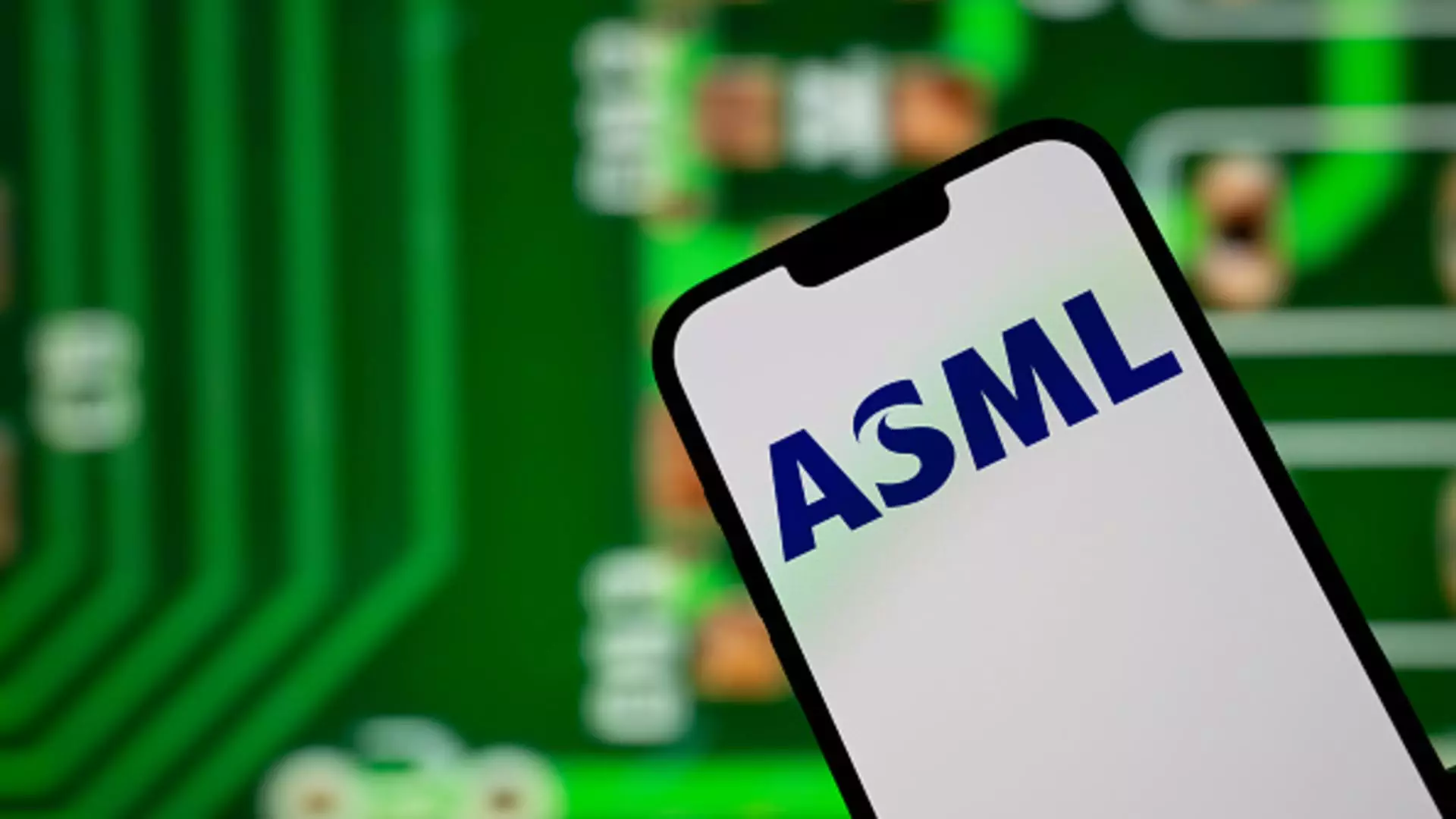ASML, the titan of semiconductor equipment, recently announced results that ticked all the wrong boxes, sending shockwaves through the industry. Despite being a cornerstone of the chipmaking supply chain, the company finds itself grappling with uncertainties stemming from new U.S. trade restrictions. The implications of these restrictions are far-reaching and present a complicated picture that could alter the dynamics of the semiconductor market. In this article, I will dissect ASML’s current situation and elucidate why its future may be less than rosy.
Missed Expectations: A Wake-Up Call
The results reported by ASML for the first quarter of 2025 are enough to raise eyebrows. With net sales at €7.74 billion—slightly below the anticipated €7.8 billion—it’s clear that the company is facing headwinds. The most alarming figure, however, is the net bookings, which fell to €3.94 billion against expectations of €4.89 billion. This decline is not just a minor blip; it signals a profound shift in order demand, particularly in light of ASML’s pivotal role in producing machines necessary for advanced chip manufacturing. As investors reacted negatively, leading to a 5% drop in share prices, one has to ask: is the golden era of chip demand beginning to fade?
Trade Turbulence: The Uncertainty Principle
CEO Christophe Fouquet stated that “uncertainty with some of our customers” could significantly affect demand, highlighting a crucial dilemma not just for ASML but for the entire semiconductor industry. The U.S. has instituted tariffs that are causing a ripple effect, introducing a layer of unpredictability that complicates business operations. While there’s a strong demand outlook driven primarily by the rapid growth of artificial intelligence technologies, the shadow of U.S. tariffs looms large. Fouquet’s comment about tariffs creating “new uncertainty” is an indictment of the precarious balance that companies like ASML must maintain in order to remain competitive globally.
The Impact of U.S. Tariffs: A Double-Edged Sword
The recent moves by the U.S. administration to inspect and potentially impose new tariffs on semiconductor technology are highly concerning. This development could result in a significant overhaul of the supply chain, forcing companies to reassess their global partnerships and production strategies. Equity analyst Ben Barringer’s statement that potential impacts from U.S. tariffs could be “widespread” captures the very essence of this scenario. As ASML leans on its relationship with customers like TSMC, the company finds itself in a precarious position, perilously balancing its commitments against the backdrop of geopolitical tensions. Can ASML afford to risk alienating key customers if the political landscape continues to shift?
Nvidia’s Shockwaves: A Warning Sign
The semiconductor industry received another jolt with Nvidia’s announcement of a staggering $5.5 billion quarterly charge due to U.S. restrictions on exports to China. Such revelations serve as warning signs of what could be on the horizon for ASML and its competitors. As companies face stringent restrictions and the potential for additional tariffs, the immediate future of chip manufacturing is at risk. ASML, which relies heavily on the ecosystem of partnerships that span continents, cannot afford to ignore these developments. The fabric of the semiconductor market is interwoven, and a single disruption could unravel the entire structure.
A Key to Resilience: Surveillance of Market Dynamics
Fouquet emphasized the importance of monitoring demand closely, a statement which underlines a critical reality: adaptability is paramount. In a landscape where consumer electronics and AI technology continue to evolve, ASML must pivot quickly in response to ever-looming uncertainties. The stipulation that revenues could dip toward the lower end of guidance is troubling; this suggests a fundamental vulnerability that may deter potential investors. For ASML to sustain its position as a market leader, it must undertake strategic initiatives to navigate this environment, which may involve redefining its value proposition and solidifying its relationships.
Final Thoughts on Future Prospects
While ASML is undoubtedly a front-runner in the semiconductor space, this latest report raises pressing questions about its long-term outlook. At its core, the larger narrative concerns not just ASML but the semiconductor industry as a whole, as it navigates a treacherous landscape shaped by political and economic uncertainties. For center-wing liberals, who advocate for open market principles and international cooperation, the ongoing trade disputes serve as a troubling reminder of how intertwined politics and economics have become. As the semiconductor landscape faces potential upheaval, stakeholders must recognize that the ability to adapt to change will be the key factor in securing a competitive edge.

